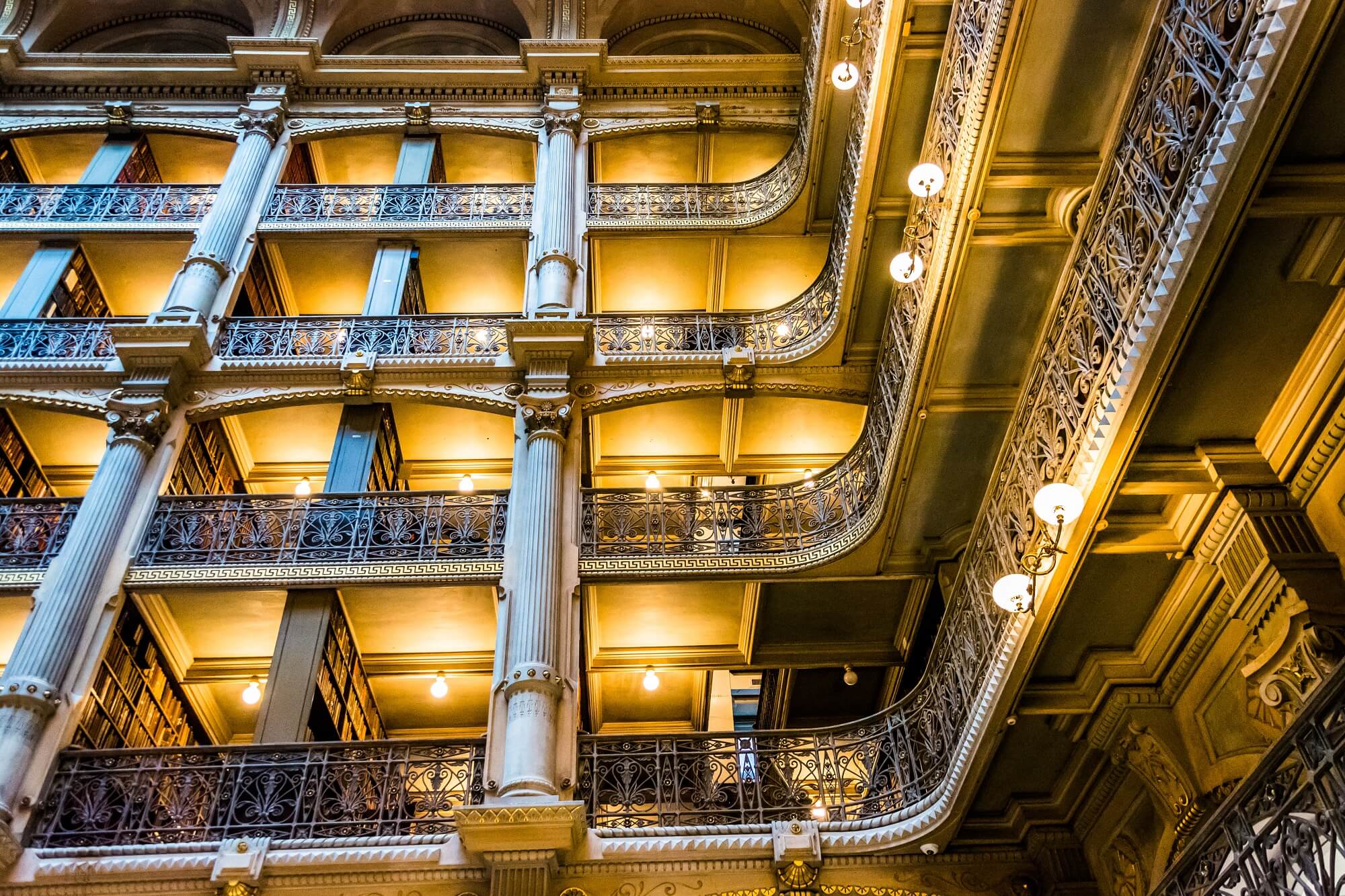RESERVATIONS: BOOK NOW ~ or call ~ 410-461-4636
How To Plan Your Visit to Johns Hopkins University
Johns Hopkins University—the nation’s first research university!—is right here in Baltimore. Johns Hopkins was founded on the principle that by pursuing big ideas and sharing what is learned, we make the world a better place. For more than 135 years, this outstanding institution hasn’t strayed from that vision. In fact, they’ve expanded it.
The university and its campus have played an essential role in the evolution of Baltimore throughout the generations. Whether you’re an arts enthusiast, a science and engineering buff, or simply appreciate architectural splendor, you should consider a visit to the Homewood campus next time you visit Baltimore.

The stunning Peabody Library is just a short drive from the Johns Hopkins University main campus.
History of Johns Hopkins University
The university takes its name from 19th-century Maryland philanthropist Johns Hopkins, an entrepreneur and abolitionist with Quaker roots who believed in improving public health and education in Baltimore and beyond.
A notable investor in the Baltimore and Ohio Railroad, Hopkins set aside in his will a startling $7 million to establish a hospital and affiliated training colleges, an orphanage, and a university. At the time, it was the largest philanthropic bequest in U.S. history.
The university opened in 1876. The university’s first president, Daniel Coit Gilman, is the namesake of the original academic building on the Homewood campus, Gilman Hall.
The Homewood Campus
Most Johns Hopkins undergraduates study at Homewood, the 140-acre North Baltimore campus that has been home to the School of Engineering since 1914 and the School of Arts & Sciences since 1916.
Today, about 5,000 undergrads take courses offered by those two schools at Homewood, which is also home to dozens of research labs, two libraries, residence halls, administrative buildings, and athletic and recreation facilities.
Homewood is a traditional college setting in a big city environment: red-brick buildings and tree-lined pathways, an iconic clock tower, and expansive green quads. The campus is spacious and wooded, like a park. There’s even an area called The Beach, where students can spread out a blanket on the grass to read, hang out with friends, or people-watch (sorry, there’s no sand or surf).
The Conservatory & Arts
The Peabody Institute, the nation’s first conservatory, is home to some of the world’s most gifted musicians and puts on more than 50 events each year that are open to the public—orchestral and jazz concerts, operas and symphonic performances, Renaissance music and modern arrangements that defy description.
There’s plenty of music and arts to enjoy on campus, with more than 30 student a cappella and dance groups and the Hopkins Pep Band (a fixture at football and lacrosse games), and the Choral Society, founded in 1883 by Woodrow Wilson as the first student group on campus. Johns Hopkins also has a chamber ensemble and a gospel choir, a wind ensemble and jazz bands, and the acclaimed Hopkins Symphony Orchestra.
For the more visually inclined, the Center for Visual Arts gives students a studio environment to hone their painting, drawing, cartooning, design, and photography skills. In addition to the neighboring Baltimore Museum of Art, you can explore one of the university’s three museums.
Johns Hopkins University is a wonderful microcosm of Baltimore and its significance to the region and the nation. We’d love to host your next Baltimore adventure here at the Wayside Inn, in nearby historic Ellicott City. Download our free area vacation guide to help plan your stay!
